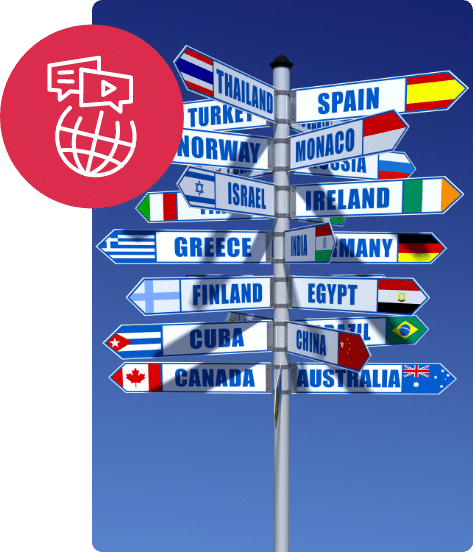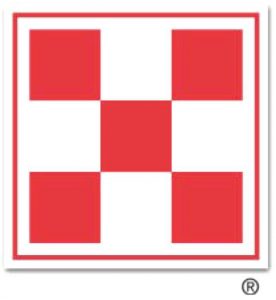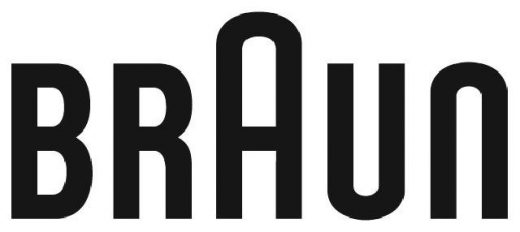Arabic Translation Services
At GoLocalise, we specialise in high-quality Arabic-English translation for all types of content and media, including audio and video files—such as interviews, TV commercials, social media videos, radio interviews—and written content like websites, articles, press releases, and more.
Our team of expert Arabic translators brings years of experience in delivering precise, culturally relevant translations that adhere to the highest standards. For audiovisual content, we work with specialised translators who understand the unique requirements of adapting translations to fit specific time constraints, such as for voiceovers or animated scripts. Our translators ensure the translation matches the timing, tone, and flow of the original audio or video, often using a two-column format to keep the source and translation aligned and consistent throughout.
From multimedia content to written materials, we provide seamless, context-driven translations that preserve the original intent and resonate with your target audience.
GoLocalise has been Atlas’s sole provider of translation and foreign voiceover services since 2011. Their friendly and efficient team have localised a range of technical and behavioural projects and in a variety of multimedia formats. Atlas considers GoLocalise to be our localisation partner; trusted to consistently deliver on time and to a high standard.

Professional Arabic Translators
At GoLocalise, all Arabic translation services are handled exclusively by professional, native Arabic-speaking translators who are also fluent in English. Our translators are specialists in the subject matter of your content, ensuring that every translation reads like an original document in the target language. With our rigorous vetting and quality control process, we guarantee that every project meets the highest standards of accuracy, cultural relevance, and industry expertise.
We offer expert translation services between Arabic and English, with a strong emphasis on maintaining the integrity of your content. If you require translations between Arabic and another language, please reach out to our team before placing your order, and we will be happy to assist you.
Learn more about Translation Services
Let's get started!
Make a Powerful First Impression with GoLocalise as Your Trusted Audio and Video Translation Provider
- WOW your clients with first-class translations carried out by translation experts in that particular industry sector.
- Stringent quality control processes - subtitling (English) templates created and checked in-house, and timed to professional standards.
- Industry leading subtitling software to create subtitles that are perfectly timed to the exact frame and aesthetically positioned around shot changes.
- Your message faithfully and accurately delivered by experienced native subtitlers only.
- All translations are thoroughly quality checked by our experienced project managers before final delivery.
- You will receive ready-to-use videos with translated burnt-in subtitles - open captions - that are ready to be uploaded to your website. You can customise the style and look of the subtitles (font, size, colour, positioning, etc.).
- If you prefer to give your clients or viewers flexibility, why not go for subtitles that can be switched on and off in multiple languages? You can receive closed captions in the format of your choice – ready to be uploaded to YouTube or Vimeo channels, DVD or Blu-Ray.
- Go the extra mile by localising all your content. On-screen text and captions in your video can be translated and graphically edited, so that you receive a flawless foreign language version.
Let's get started!
Why Choose Us?

Leave your project to the experts at GoLocalise so that you can relax and be assured of getting top-notch results
Every single detail will be analysed, studied and looked after so that you do not need to worry. Some would say it’s not too classy to blow our own trumpet… but we just like to point out two very important details.
We have achieved ISO 9001 Quality Management certification in recognition of our consistent performance and high standards, and ISO 14001 Environmental Management because we care about our planet!
And if you are still curious and want to know more about us, why not have a look at our studio page.
Arabic Areas of Expertise
At GoLocalise, we specialise in the translation and localization of a wide range of content, with a particular focus on audiovisual projects. Our team is equipped to handle the unique challenges of translating multimedia content while ensuring it resonates with Arabic-speaking audiences. We provide expert services across various sectors, including:
Audiovisual Content Localization
Films, TV shows, documentaries, and corporate videos
Voiceover and Dubbing
Animation, eLearning, and explainer videos
Subtitling and Captioning
Subtitles for foreign markets and accessibility
Mobile App and Game Localization
In-app videos, trailers, and game cinematics
Marketing and Advertising Content
TV ads, online campaigns, and product launches
eLearning and Training Materials
Educational videos and corporate training modules
Website and Multimedia Localization
Embedded videos and interactive content
Podcast and Audiobook Localization
Narration, storytelling, and scripted content adaptation
With expertise in both translation and audiovisual adaptation, we ensure that your content is culturally relevant, linguistically accurate, and tailored to the specific nuances of the Arabic language, regardless of medium or format.
3 Steps To High Quality Assurance
We use continuous quality control processes to monitor quality and accuracy at each and every stage of a translation project.
Skilled translators are carefully selected, and rigorous quality control measures are applied to ensure accuracy and consistency at every stage of the process. Each project is meticulously managed to uphold the highest standards and deliver exceptional results.
Each translated document is meticulously edited by a second translator to ensure accuracy and thoroughly resolve any linguistic issues. The assignment is carefully matched to an appropriate subject matter specialist to maintain the highest standards of quality.
The first translator conducts a final quality check to ensure edits and formatting are accurate, terminology is consistent, and there are no errors or omissions. Every translation is meticulously reviewed against the original document to maintain top quality.
Learn more about Translation Services
Let's get started!
Arabic Varieties and Dialects
Arabic is a rich and diverse language with various dialects that differ significantly from Modern Standard Arabic (MSA). While MSA is widely understood across the Arab world and used in formal settings, the everyday spoken language can vary greatly from country to country and even region to region. These dialects can be quite distinct, and in many cases, they are not mutually intelligible.
At GoLocalise, we understand the importance of accurately capturing the nuances of the language depending on the region or audience. We work with specialised translators who are experts in both MSA and the most common Arabic dialects, including Egyptian Arabic, Levantine Arabic, Sudanese Arabic, and Mesopotamian Arabic. Each of these dialects has its own set of regional variations, and our translators ensure that your content resonates with the specific target audience while staying true to the intended message.
Whether you’re translating audio, video, or text, our team is equipped to handle the complexities of Arabic language varieties, ensuring your project is culturally relevant and linguistically precise.

A Translation Masterclass
At GoLocalise nothing is too much hassle! The expert team of project managers, translators and linguists are always at hand to ensure your content is perfectly localised – whatever the media. You’ll benefit from a company with over 15 years’ experience, an in-house subtitling team, and in-house state-of-the-art recording facilities!
Audiovisual translation, or AVT, is a highly specialised type of translation, which is increasingly popular in today’s digital world. We are surrounded by audiovisual content, so it makes sense that there is a type of translation that is suitable for the modern technological world.
AVT requires some of the same skills as general translation but also poses additional challenges. In subtitling for instance, the translator must fit the translation into the time and space constraints posed by the video; whilst in voice over the length of the translation must be considered and match the original as closely as possible. And these are just a few examples.
AVT is certainly no easy task and it takes a team of experienced professionals to do it well. This is where we can help you. We are highly specialised in AVT, so you can trust us to deliver products which look good, sound great and are perfectly suited to your target audience, all in your preferred format.
We know that a game doesn’t just have to look good and play smoothly, it also has to sound great and read well too. That’s why we, at GoLocalise, provide all our clients with carefully selected linguists, who are not only specialists in the video game field but are also gamers themselves.
We look after every single detail when localising games into foreign languages and always use the latest glossaries for all the current video game platforms, Wii, PlayStation, Xbox, etc. so that terminology and platform word choices are always spot-on.
GoLocalise provides your company with e-learning translation, localisation and voice over services, leaving you with a ready-to-host product.
We only employ highly skilled linguists who have extensive experience in e-learning and a sound understanding of the particular industry sector they are dealing with.
Our service includes the management of the whole process and the delivery of content adapted to foreign markets.
The steps and services involved in any end-to-end e-learning project are: the translation of the course and on-screen text; the localisation of the course graphics; the voice over recording of the course with your preferred voice over talent/s; and the quality control during which the localised course files are reviewed against the original files.













